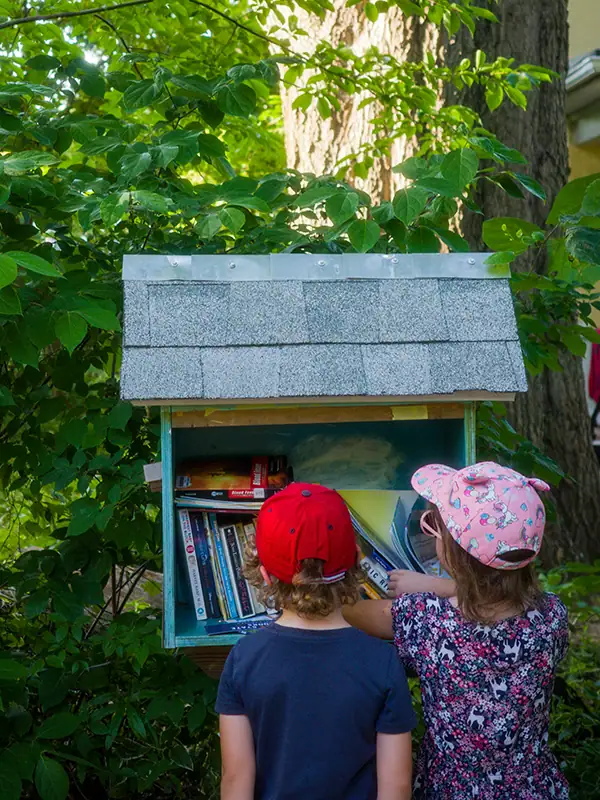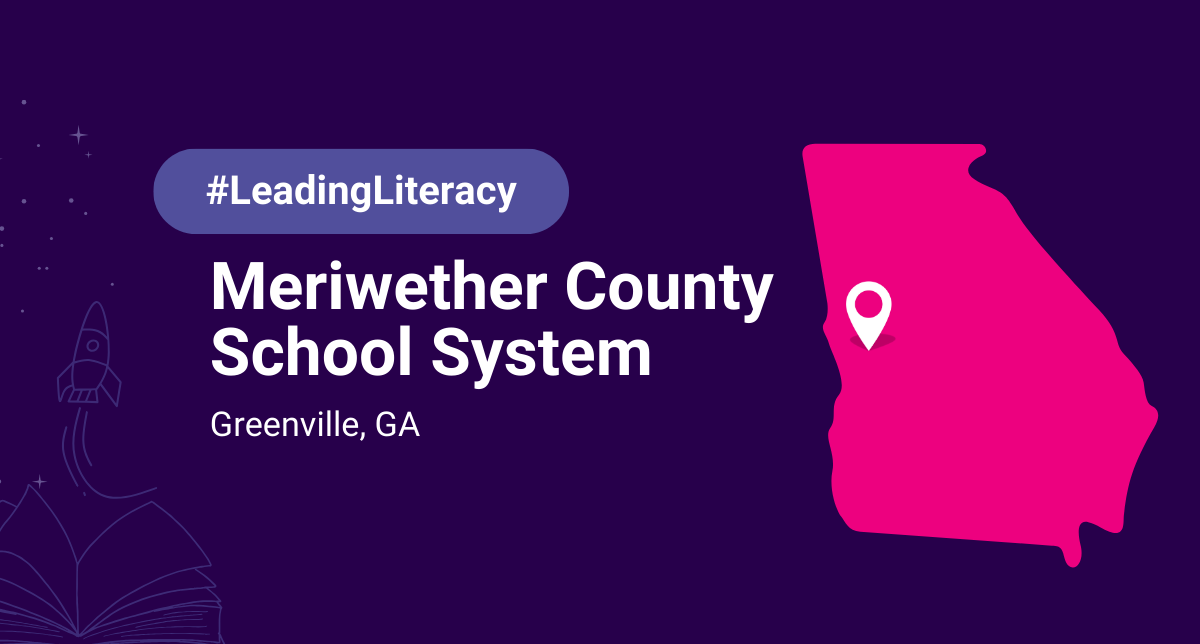How do schools increase family engagement in their children’s reading performance? It’s a question district and school leaders have been grappling with for years, but the post pandemic era has ushered in a whole host of challenges that can make the bridge between school and family feel harder and harder to build.
Rates of chronic absenteeism, parental dissatisfaction, and student disengagement have all skyrocketed — even as reading scores are continuing to trend downward in much of the country.
Would you believe us when we say there’s good news too?
And parental involvement may just be the missing ingredient in your district’s literacy turn-around?
What the Parents Say About Reading
We’ll start with the good news.
Most parents and guardians truly care about their kids’ reading achievement.
A majority of parents with children in grades K-5 surveyed by the research firm Impact Research (on behalf of the Walton Foundation) said they thought reading is the most important school subject, outweighing the other core subjects by a large margin.
Another bit of good news?
Parents and guardians also agree that family engagement in education is important.
Almost 50% of K-5 parents say their child “is currently struggling or has struggled with learning to read.”

Where Families Falter in Helping Their Students
The data is there — families know their kids need help, and they want to lend a hand.
So let’s talk about the barriers that hold them back from engaging in reading — barriers that sit on top of the common challenges like time constraints and childcare limitations that can already make family engagement so hard to get right.
1. Reading Instruction Is Changing
As districts move instruction to align to the Science of Reading, the landscape of reading education is changing rapidly.
That’s a good thing for kids, but this change can be confusing for parents and guardians — especially those who were taught reading using the methods that districts are rapidly moving away from.
Then you layer in the fact that caregivers come from diverse backgrounds, speak different languages, and may have little to no background knowledge on the literacy content you would like them to support with, says Erin Johnson, director of literacy and academic partnerships at Ignite Reading.
Most parents and guardians are not educators, Johnson stresses, and they’re likely unfamiliar with terms like digraphs and blends that have become increasingly commonplace in early literacy instruction.
Change isn’t the only challenge families are contending with, either.
2. Many Adults Aren’t Strong Readers Themselves
It’s estimated that 130 million American adults have reading skills below a 6th grade reading level. About 45 percent of them — that’s around 59 million adults — read at or below the lowest levels.
This may not come as much of a surprise to you. Reading scores have, after all, been stagnant for the past three decades.
If today’s parents and guardians, aunts, uncles, and even grandparents, faced reading difficulties in school themselves, is it any wonder that many would feel unequipped to help kids at home?
We need to bring families along on the journey.
How can district and school leaders meet parent and caregiver needs so they, in turn, can meet the needs of their children?
Instead of asking, “How do we get families to come to us?” we need to be asking, “How do we meet families where they already are?”
We asked members of the Ignite Reading academics team to share some of the advice they give to our district and school partners to help them foster school-family relationships that reap real reading rewards for students.
Read on for ideas to build your district’s family engagement, plus find home-based activities and tools that parents and guardians in your district can use to promote greater learning at home.
How to Increase Family Engagement in School Reading Transformation
Long before a child ever straps on a backpack or climbs aboard a school bus, they’re experiencing sounds, words, sentences, and their contexts at home as they listen to their families.
Whether or not it’s intentional, parents and caregivers are quite literally readying their children for the process of learning to read and write.
And yet nationally representative data suggests a quarter of caregivers in the U.S. never read with their children, often because they face financial constraints and competing responsibilities, have limited access to reading materials, and a host of other factors.
One of the barriers to family engagement most often cited by parents and guardians is a fear of judgment by the school community.

With this diversity of families in mind, our team created this list of tips to help you boost family engagement with an eye on building equitable access and forming a partnership with caregivers.
Provide No-Cost Ways for Families to Support Literacy
Equipping families to help students become strong readers requires school and district leaders to be intentional about creating tools for families that remove barriers and address inequities.
One simple way to do this is to provide families with easy, no-cost methods to support their children’s literacy growth.
“Parents need to know that supporting their child’s foundational reading skills development does not have to be a daunting task,” Brittny Tennessee, a literacy manager at Ignite Reading, advises leaders in our partner districts. “In many cases, it can be integrated into daily routines seamlessly.”
Tennessee suggests copying and pasting the following activity suggestions to your new school district newsletter or posting them on your school website:
4 Easy Ways to Incorporate Reading Practice Into Everyday Activities
- Engage in letter sound drills while commuting to school in the morning. Challenge your child to share what sound specific letters make.
- Play word segmenting and sound counting games. You might ask “How many sounds are in the word cat? What are they?”
- Challenge your child to read the words they see on signs along the roadway or spot letters in simple street signs.
- Ask your child to read labels on the food items at the grocery store.

Out of Balance
Families with incomes of $100,000 or more have nearly twice the amount of books that are owned by families with less than $35,000 in annual income.
Give Parents a Literacy Intervention Education
Building family investment in a child’s literacy progress may be one of the best tools school districts have at hand to build students’ investment in their own growth.
The line between how involved a family is in their child’s education and that child’s literacy performance is straight and well defined.
In a 2008 Harvard study of levels of family involvement from kindergarten through 5th grade, researchers found that family involvement increases children’s positive feelings about literacy, which in turn improves their literacy performance.
Other studies have shown the family engagement practice most predictive of children’s academic skills in Pre-K and elementary school is a cognitively stimulating home learning environment, and a plethora of evidence links parents’ direct teaching of language and literacy to better learning outcomes in elementary school.
A family education element can truly make all the difference. How can you make this part of your literacy planning?
Family Resource Alert: Share this foundational reading skills glossary with families to help them demystify the language of early literacy instruction.
Johnson advises districts to take advantage of back-to-school nights on the calendar to set up fun games and activities that help parents and families learn key foundational or literacy skills terms and help them understand why the skills are important.
“Teachers, reading coaches/specialists, and admin can be present to answer parent questions about literacy practices at home,” Nailah McNeil, a literacy specialist at Ignite Reading, adds. “This would also be an opportunity to give out free books and other literacy ‘take-home’ bags.”
Partner Spotlight — ‘FACE-ing’ Family Engagement in Alexandria City.
At Alexandria City Public Schools — one of Ignite Reading’s partner districts in Virginia — families get the fuel they need to help their kids succeed thanks to the district’s Family and Community Engagement (FACE) team. Tasked with developing programs and strategies to support meaningful engagement of families and community stakeholders, FACE runs a four-week training course for parents and guardians to learn strategies to support learning at home.
While the adults are learning, the kids are too! The district provides students with extended learning opportunities to students while their families are engaged with subject area training.
The district also offers families a free 16-week course to help develop basic English literacy skills, plus family support groups with both English- and Spanish-speaking facilitators.
You don’t have to wait for the next big event on the calendar — nor should you.
Traditional family literacy nights and similar events do not work for every district or every family. If you’re finding that you’re throwing events that draw the same 12 families who show up to every other event, it’s time to think outside your school building.
Support In-School Intervention With At-Home Resources
If students are enrolled in a literacy intervention like high-dosage foundational reading skills tutoring, empower their caregivers with regular insights into their child’s progress and tips on how to reinforce instructional strategies at home.
Sometimes children living in low-income households are at risk of school failure by virtue of their parents’ low levels of formal education. When these families engage with their children’s education, Harvard researchers say it can have an even bigger benefit than the same level of engagement by families from other socioeconomic backgrounds.

Connect Families With Reading Materials
The benefits of growing up in a home with books cannot be overstated, especially for our littlest learners. It’s estimated children growing up with this sort of access get as much as 3 years more schooling than children from bookless homes, even when controlled for other key factors such as income and parents’ education.
The big gaps we see in reading proficiency among different groups of students often come down to structural inequalities that make it harder for kids to get the support they need to improve their reading skills. For many families, access to reading materials falls in this camp.
How can your district increase the number of books students access at home? Julia Weber, instructional designer at Ignite Reading, recommends you start by forming a partnership with the local library, providing a source for ongoing access to reading materials, literacy programs, and more.
Although these partnerships can take a variety of forms, Weber’s favored method is to plan an entire Family Literacy Night around the library.

“Make school buses available to take families to the library where they can meet the staff, get library cards, and connect with other families,” she suggests. “It’s a great way for families to get more involved in literacy development.”
Perhaps best of all, once a family has established a relationship with their local library, their children have access to an endless stream of books.
How to Get Free Books for Your Students
You may also consider partnering with a philanthropic organization to provide students with books they can keep at home to read again and again. Check with the following organizations to see if your school qualifies:
- Books Are Fun
- Dolly Parton’s Imagination Library
- BookTrust
- BookSmiles
- Lisa Libraries
- Books for Keeps (Georgia only)

Free for All
There are thousands of book sharing boxes across the country where families can access free books for their children. Share this Little Free Library map with families, so they can check to see if there’s one near their home..
Make Family Literacy Fun
Families don’t need to hear another set of educators shelling out another “Read together for 20 minutes a night” edict.
They already know reading is important.
Instead, empower parents and caregivers to support the literacy development process with specific at-home activities. Adding elements of fun to those activities is key — it drives home that reading can be (and should be) pleasurable.
For example, McNeil suggests creating a reading tracker challenge featuring a book of the month from a specific place or culture in the world.
“Using the book as an anchor, provide question/activity sets, along with a resource of “at-home field trip” links that provides additional exploration opportunities (e.g. the live feed of the polar bear’s den at the San Diego Zoo, or a YouTube video about ancient pyramids, etc.),” she suggests.
You can also suggest a list of kid-friendly podcasts for families to turn on at home or while they’re on the go to build students’ oral language and vocabulary. Why not copy and paste this list of favorites from educators on the Ignite Reading academics team to your district website?
Kid-Friendly Podcasts Educators Love
- But Why? A Podcast for Curious Kids
- Brains On
- The Adventures of Cairo
- Greeking Out
- Smash Boom Best
- Forever Ago
- Sparkle Stories
A Side Benefit of Family Engagement
Increasing family engagement in your schools isn’t just good for your students; it’s good for your teachers too.
With parents and guardians as their partners, your teachers have a chance to learn more about your students. They’ll also reap the benefits of having an extra support team practicing these critical skills.
Feature image via MarylandGovPics/Flickr






